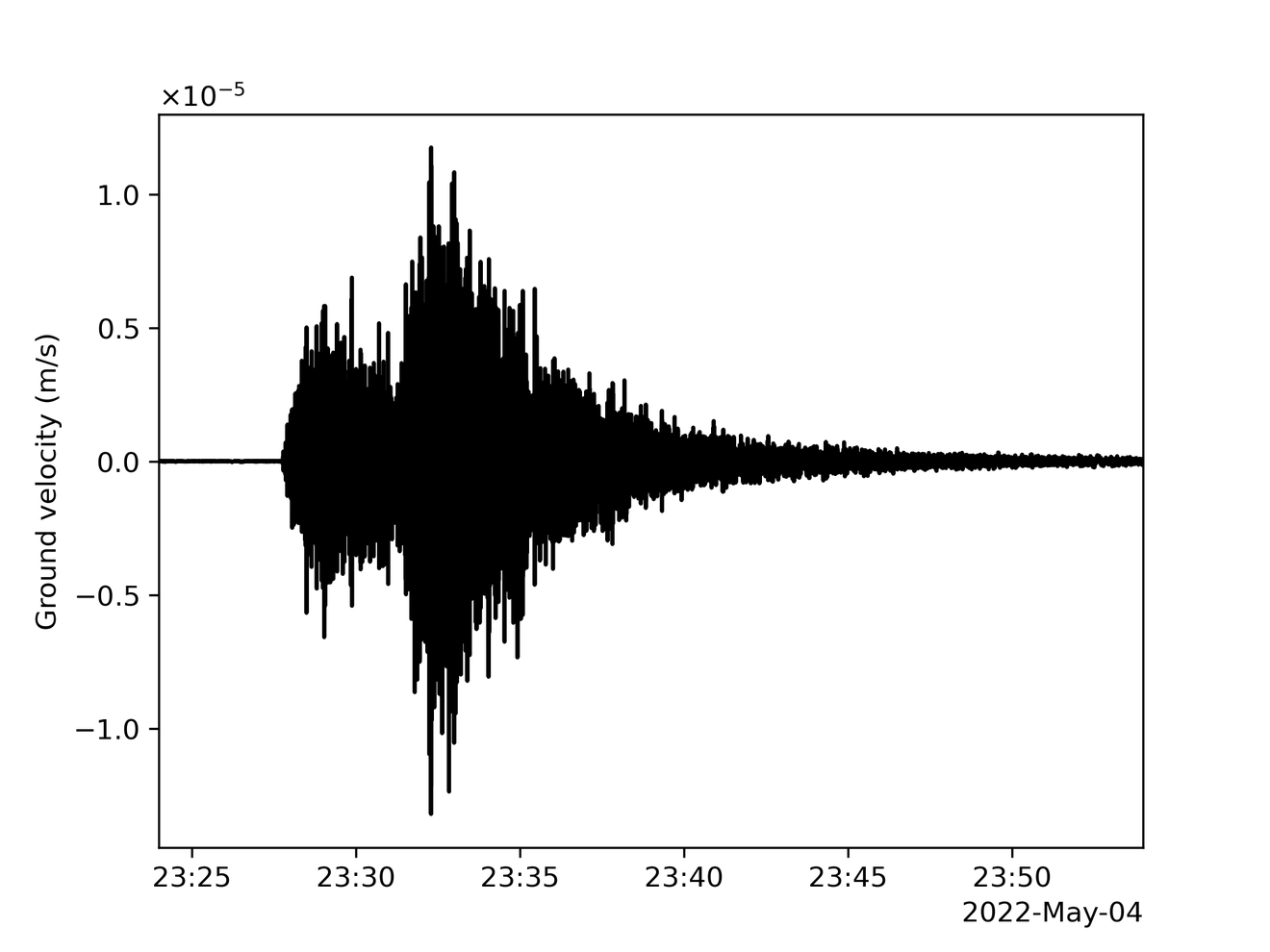In its four-year mission on Mars, NASA’s InSight has measured a wide range of quakes shaking the Red Planet. Tremors big and small slowly revealed what the interior of Mars is like and the activity within. It also measured meteor strikes, with cosmic rocks hitting Mars and making it ring like a bell. The largest marsquake was also believed to have been caused by a cosmic collision – but it turns out that it was something different.
The largest marsquake was recorded on May 4, 2022, as the NASA lander was already struggling to keep everything working. Its solar panels were getting covered in dust and the Martian winter was approaching. The detection was actually instrumental in convincing NASA to squeeze every bit of science from the lander before the end. And there was a big question to answer: What was the cause of the massive tremor?
Impacts were responsible for two of the largest tremors measured on Mars, so the obvious candidate for this quake was another impact. The marsquake, dubbed S1222a, had a magnitude of 4.7 and caused vibrations around the planet to reverberate for six hours. If it was an asteroid hitting Mars, it would have left a crater behind.
Lead author Dr Benjamin Fernando of the University of Oxford contacted the European Space Agency, the Chinese National Space Agency, the Indian Space Research Organisation, and the United Arab Emirates Space Agency to look for the crater. They all have missions worldwide, and together they would make the task of searching for a crater easier.
“The most exciting thing about this research has been bringing together researchers from across the world to search for the crater, including those from nations who do not routinely collaborate in space research,” Dr Fernando told IFLScience.
The collaboration was historic, but after surveying the whole 144.8 million square kilometers (55.91 square miles) of Mars, they did not find a new crater. This is not a disappointing result. If the tremor’s cause did not come from the sky, meant it came from inside the planet.

The seismometer recording of the largest quake ever recorded on another planet.
Image Credit: NASA/JPL-Caltech
The most likely explanation is that tectonic forces within Mars had a sudden release. This means that Mars is more geologically active than it was expected based on the previous measurements from InSight.
“We still think that Mars doesn’t have any active plate tectonics today, so this event was likely caused by the release of stress within Mars’ crust. These stresses are the result of billions of years of evolution; including the cooling and shrinking of different parts of the planet at different rates,” Dr Fernando explained in a press statement sent to IFLScience. “We still do not fully understand why some parts of the planet seem to have higher stresses than others, but results like these help us to investigate further. One day, this information may help us to understand where it would be safe for humans to live on Mars and where you might want to avoid!”
Despite the null result on a new crater, it is inspirational to see so many different national and international space agencies working together.
“This experiment shows how important it is to maintain a diverse set of instruments at Mars, and we are very glad to have played our part in completing the multi-instrumental and international approach of this study,” Dr Daniela Tirsch, Science Coordinator for the High-Resolution Stereo Camera on board the ESA’s Mars Express Spacecraft explained.
These are sentiments that are echoed by the other international collaborators.
“We are willing to collaborate with scientists around the world to share and apply this scientific data to get more knowledge about Mars, and are proud to have provided data from the colour imagers on Tianwen-1 to contribute to this effort,” Dr Jianjun Liu, National Astronomical Observatories, Chinese Academy of Sciences, added.
“This has been a great opportunity for me to collaborate with the InSight team, as well as with individuals from other major missions dedicated to the study of Mars,” stated Dr Dimitra Atri, Group Leader for Mars at New York University Abu Dhabi and contributor of data from the UAE’s Hope Spacecraft. “This really is the golden age of Mars exploration!”
A paper describing the results is published in the journal Geophysical Research Letters.
Source Link: We Know What Caused The Largest Ever Marsquake – And It Wasn’t A Meteor